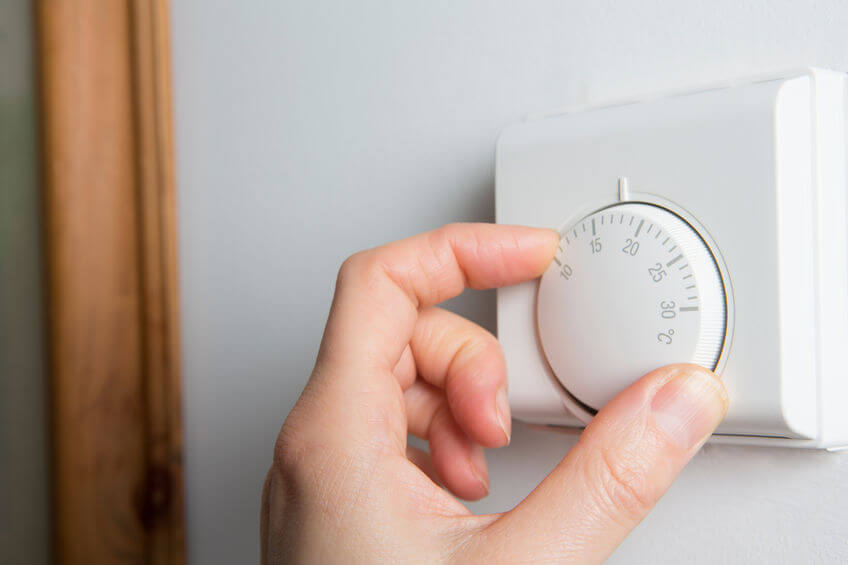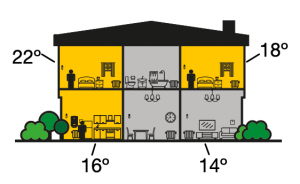
Since central heating systems were first installed into homes in the 50’s & 60’s there has been a thermostat somewhere in the house to control the temperature.
 The reason why most smart thermostats’s copied this approach was probably because having a so called smart thermostat was going to be a change for lots of people and therefore they tried to closely match what people already had. While this may make sense for customer adoption it makes no sense for more efficiently heating houses. If you have an extension on your house using modern building materials and modern insulation then it is going to heat up quicker and retain heat better than an older part of the house, this in turn means that it will have reached 22 degrees long before the other rooms but because the heating system is still trying to get the room where the thermostat is positioned up to 22 degrees it will continue to heat all rooms. This results in overshoot, so your new extension room ends up at 25 degrees (wasting energy and costing money).
The reason why most smart thermostats’s copied this approach was probably because having a so called smart thermostat was going to be a change for lots of people and therefore they tried to closely match what people already had. While this may make sense for customer adoption it makes no sense for more efficiently heating houses. If you have an extension on your house using modern building materials and modern insulation then it is going to heat up quicker and retain heat better than an older part of the house, this in turn means that it will have reached 22 degrees long before the other rooms but because the heating system is still trying to get the room where the thermostat is positioned up to 22 degrees it will continue to heat all rooms. This results in overshoot, so your new extension room ends up at 25 degrees (wasting energy and costing money).Measure the temperature in each room – Now that’s SMART
How do we have a truly smart heating system for our house? We measure the temperature in every room and only heat the rooms that are required, this saves energy and therefore money.
The Nest & Hive can’t do this unless you put a thermostat in every room which would be crazy expensive and they are just not designed to have lots of thermostats attached so wouldn’t work.
You need a full smart heating system like Genius Hub which is designed to have one or more temperature readings from each room in the house and make intelligent decisions on which rooms to heat. Whether you have a room thermostat, a room sensor, a smart radiator valve, an electric switch or all of theses in a room the Genius Hub will use one of them to determine the room temperature (or you select the one you want it to use, its called temperature hierarchy).
The Smart Thermostat is dead!
If you have a house with 4 or more bedrooms then a Smart Thermostat solution like the Nest or Hive is really not going to cut it, while it maybe an improvement on convenience from an old style thermostat it doesn’t provide you the benefits of a Smart Heating System like Genius Hub.
Benefits:
– Heat only the rooms in use (by using room sensors and artificial intelligence)
– Control the temperature in each room (not the whole house)
– Control the heating remotely (via mobile app)
– Setup heating schedules (for known usage times i.e. in the morning)
– Save energy (good for the environment)
– Save money (by reducing your usage)
Smart Heating Systems
Yes a smart heating system costs more the a smart thermostat or old fashioned wall thermostat but it is like comparing a bike with an electric car. Once you have invested in a smart heating system for your house there is no looking back. Bring your house’s heating into the latest century with the Genius Hub cutting edge technology, design and price a system for your house using our create your system.



